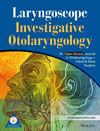This study evaluates the readability of online patient education materials (OPEMs) across otolaryngology subspecialties, hospital characteristics, and national otolaryngology organizations, while assessing AI alternatives.
Hospitals from the US News Best ENT list were queried for OPEMs describing a chosen surgery per subspecialty; the American Academy of Otolaryngology—Head and Neck Surgery (AAO), American Laryngological Association (ALA), Ear, Nose, and Throat United Kingdom (ENTUK), and the Canadian Society of Otolaryngology—Head and Neck Surgery (CSOHNS) were similarly queried. Google was queried for the top 10 links from hospitals per procedure. Ownership (private/public), presence of respective otolaryngology fellowships, region, and median household income (zip code) were collected. Readability was assessed using seven indices and averaged: Automated Readability Index (ARI), Flesch Reading Ease Score (FRES), Flesch–Kincaid Grade Level (FKGL), Gunning Fog Readability (GFR), Simple Measure of Gobbledygook (SMOG), Coleman–Liau Readability Index (CLRI), and Linsear Write Readability Formula (LWRF). AI-generated materials from ChatGPT were compared for readability, accuracy, content, and tone. Analyses were conducted between subspecialties, against national organizations, NIH standard, and across demographic variables.
Across 144 hospitals, OPEMs exceeded NIH readability standards, averaging at an 8th–12th grade level across subspecialties. In rhinology, facial plastics, and sleep medicine, hospital OPEMs had higher readability scores than ENTUK's materials (11.4 vs. 9.1, 10.4 vs. 7.2, 11.5 vs. 9.2, respectively; all p < 0.05), but lower than AAO (p = 0.005). ChatGPT-generated materials averaged a 6.8-grade level, demonstrating improved readability, especially with specialized prompting, compared to all hospital and organization OPEMs.
OPEMs from all sources exceed the NIH readability standard. ENTUK serves as a benchmark for accessible language, while ChatGPT demonstrates the feasibility of producing more readable content. Otolaryngologists might consider using ChatGPT to generate patient-friendly materials, with caution, and advocate for national-level improvements in patient education readability.


